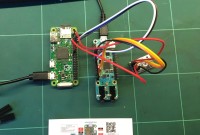Embedded IDS for IoT devices (PoC) (Work In Progress)

In a hyper-connected world, in which it is increasingly accessible to connect anything to the Internet, there are also more threats that seek to ruin the use of this technology. Keep in mind these threats when designing an IoT device is increasingly complex due to the sophistication of cyber threats. Therefore, designing an economical and low-power IDS that can be integrated into an IoT device can be key to the deployment of this technology.
Intrusion Detection System (IDS) is an essential tool for to detect the cyber threats in computer networks.
Traditionally, IDSs have been divided into two modes of operation: signature-based and anomaly detection. With the explosion of Machine Learning and Deep Learning, another way to detect unknown cyber threats is beginning to be viable.
MAXIM INTEGRATED has designed a device (MAX78000) that gathers in a small package an ARM Cortex-M core, a RISC-V core and a very low-power CNN accelerator, designed for IoT-Edge use.
Convolutional networks (CNN) have been used primarily for image and sound processing (facial recognition, live voice commands, etc.) and this is the idea of the Maxim Integrated designers when creating the MAX78000.
However, although there are studies that suggest the use of CNN as an efficient way to create IDS, it has not been studied much yet (https://link.springer.com/chapter/10.1007/978-981-15-9700-8_7 ).
This work is a proof of concept (PoC) to try to demonstrate that a very low consumption device is capable of improving the network security of the IoT, Scada, Medical, etc.
Continue reading in attached document (work in progress).




Discussie (0 opmerking(en))